A place for my musical and professional growth to be documented.
My musical goals were to learn to read sheet music on guitar and learn which notes corresponded to which frets on the guitar. I have made myself short mental etudes to do to help with this. I will say I am going go to play a G on each string as many different ways as I can, I then repeat this for different notes to solidify different positions and find familiar places on the fretboard where I know which note is which. This has been working well instead of just going up and down a chromatic scale on each string.
The first piece I learned from sheet music was Menuet
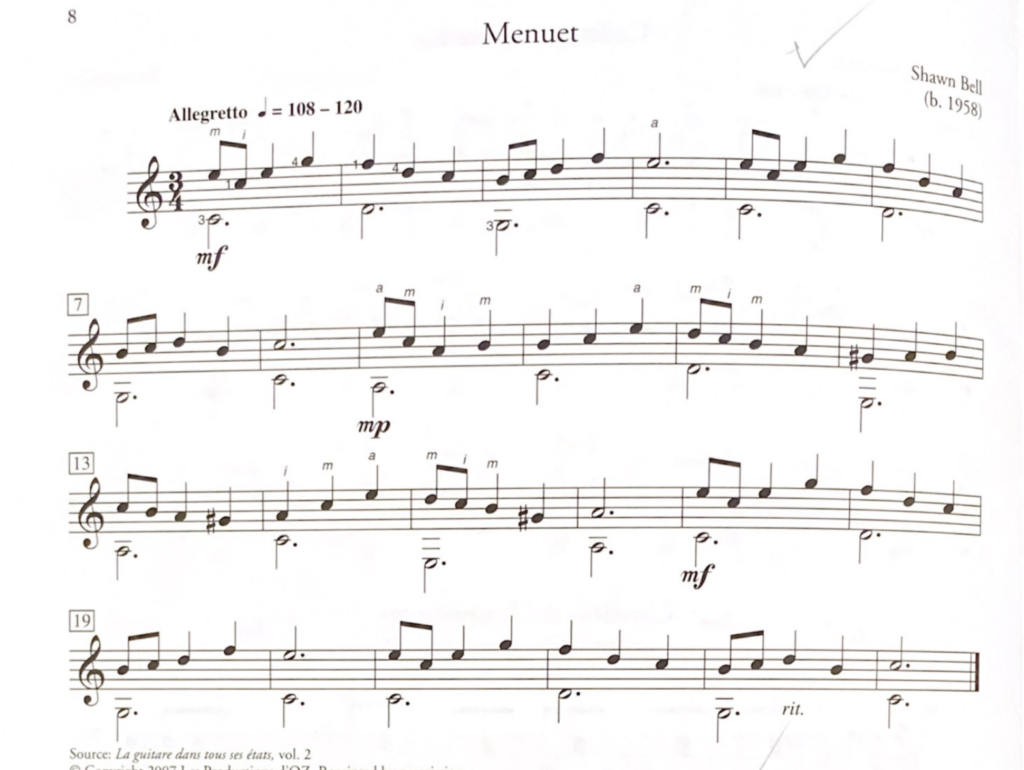
A video of me playing Menuet (not perfectly but still something Im proud of) can be found by following the link below:
The next portion was my personal growth goals. I am aware at how lacking my personal knowledge of First Nations culture is. For this reason I wanted to try and learn new things and augment my knowledge and understanding of the cultures around us. I read Dave Elliots’ Salt Water People and was intrigued by the different stories and insight it provided. A PDF of Saltwater People can be found at:
http://www.islandstrust.bc.ca/media/341928/saltwater-people-1983-delliot-sr.pdf
The way of writing is straight forward and insightful, I highly recommend it to anyone interested in this topic.
Some highlights from salt water people was the way that the first nations peoples named the land and things around them. There was such a focus on describing it instead of naming after people like what is common in European naming.
The songhees people had no river to fish from like their neighbours around them. They had to fish out in the open ocean and used a brilliant system of nets starting at the bottom to herd salmon into their boats.
The Douglas treaties were made to take the rights of the land from the native peoples they did not speak or read the language often and did not understand what they were signing away, if it was even them who actually signed it.
The Juan de Fuca straight is named after a Spanish sailor who got lost from California and then sailed north and found it. No one believed him and was left untouched for hundreds more years.
There was a lot of wars and violence between different first peoples nations. The Hieda people were very strong and powerful and got access to guns and cannons much before a lot of the other coastal nations because they found a abandoned ship.
There was such an deep understanding of the seasons and animals that surrounded them. There was a place and a time for everything. For example, the Songhees people knew what depths which fish would swim in at what time of the year and would adjust their fishing accordingly.
The point of view that greed is not necessary and we should all share. This is a beautiful sentiment that is so opposite to the Eurocentric way of thinking in which we have been brought up.
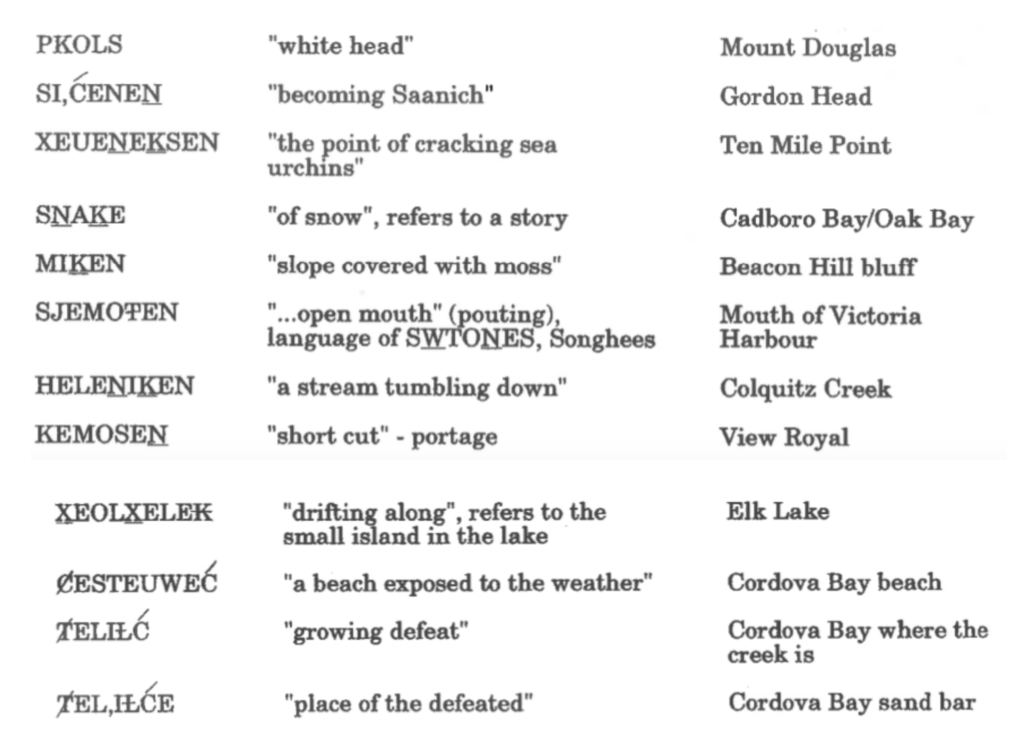
I also wanted to try to find and pronounce the names of different First People’s Nations in the B.C. area. I found a resource showing different boundaries and then found the pronunciations of different Nations and wrote them in (in red)
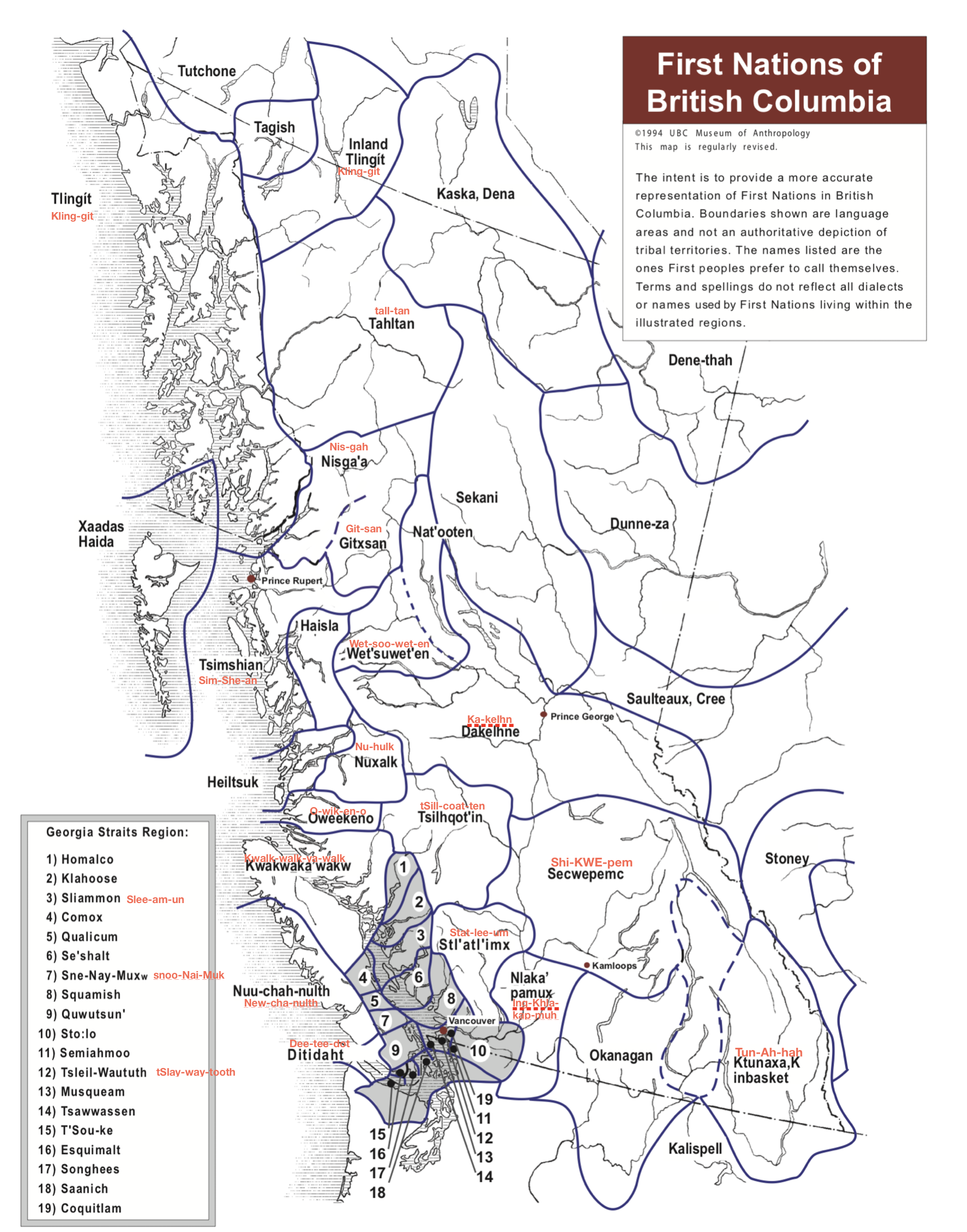
Another resource I found useful is https://native-land.ca for showing a more detailed map of different territories of First Nations People as borders are not always exact but often change and intermingle.
Part 2
For the second half of my musical goal process I attempted to become familiar with all of the notes on the fretboard. My goal was to memorize all of the notes and the different ways to play them on the different strings. I did become much more adept at knowing where each note could be played on each string. While the notes are not instantaneously known when I hit a fret, I can figure it out fairly quickly what note I am on or how to play a specific not on a specific string. This knowledge will become invaluable as I communicate with other guitar players or in my own guitar playing at home!
Here is a chart I have created showing the range of the guitar up to the 24th fret on each string.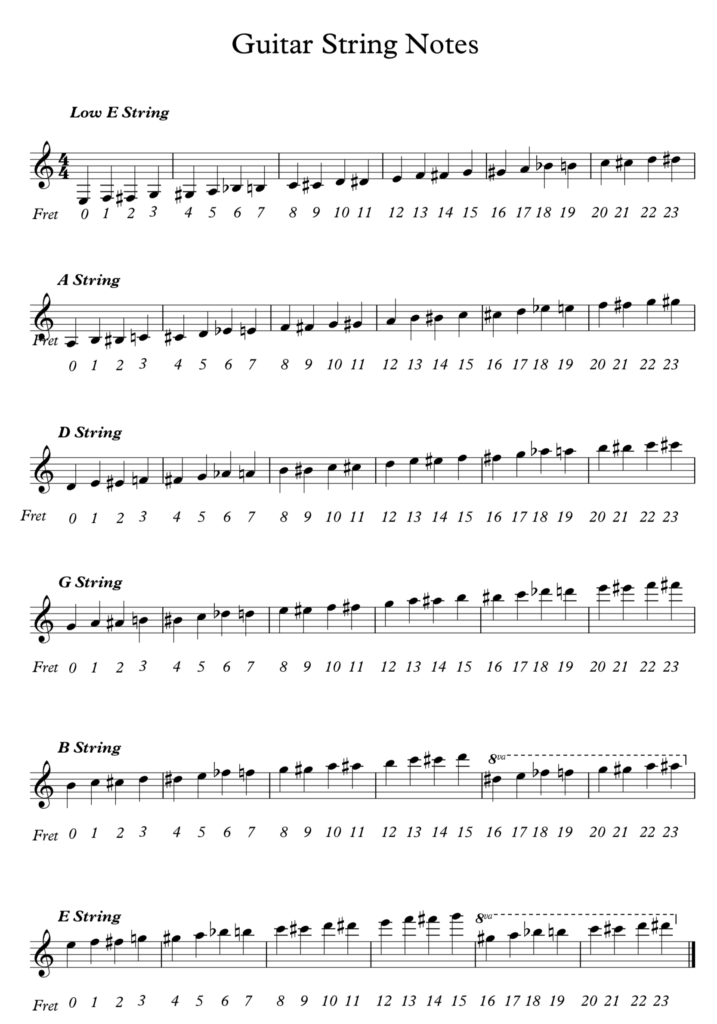
Next, my goal was to be able to play Tarrega’s, “Study in Em” on guitar from the sheet music. This was a unique challenge because it relies heavily on barre chords and moving around the neck of the guitar.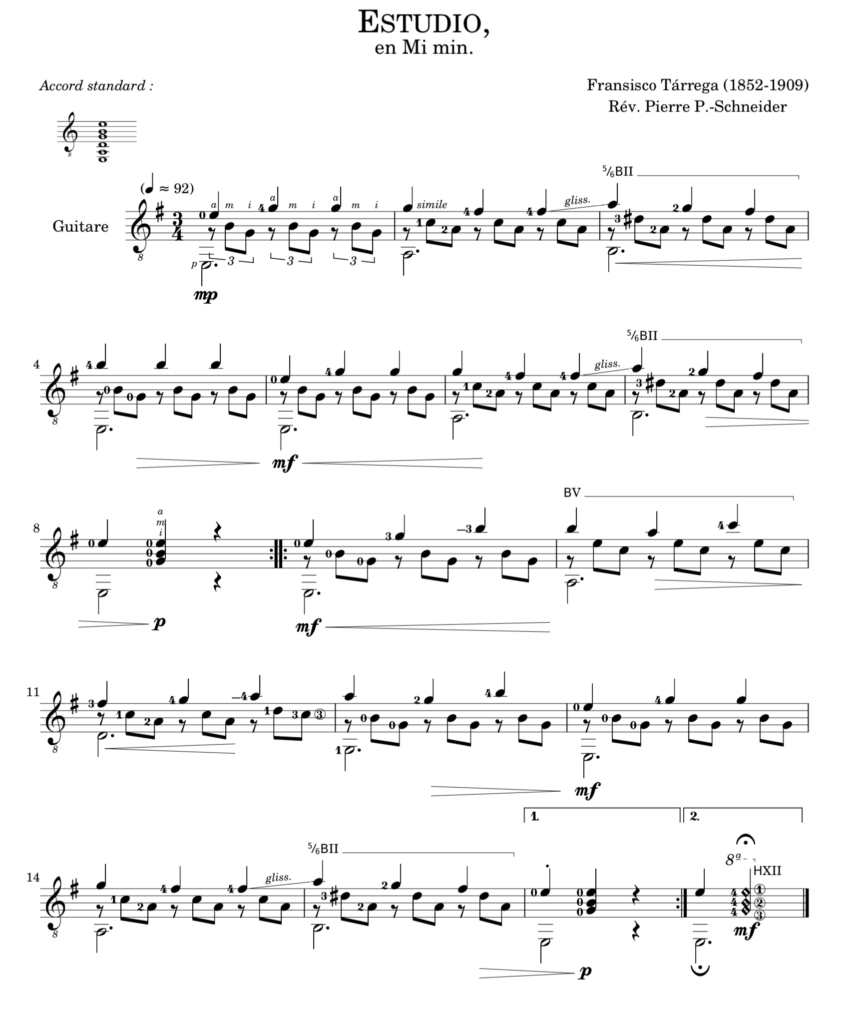
While I did not end up playing it perfectly and stumbled over a few chords I am very happy with how I was able to read the sheet music and interpret some of the guitar specific information such as the 5/6BII which I would not have known what to make of prior to learning this piece. Sections like measure 15 required me to play those notes not in the lower part of the neck but move up and find alternate ways to play those notes which made for a challenging and fun piece! Attached below is a video of me playing it.
For my professional goal I continued to educate myself about the practices and history of the First Nations people in the area. I got the opportunity to speak with members of the Esquimalt nation as I did my high school observations at the Esquimalt High school and there is a excellent relationship between the school and the Nation there.
I loved observing classes and seeing the emphasis that was put on honouring and making students aware of their heritage. One example was a English class where one of the activities specifically asked the students to write down from which nation they come from and discuss with others in the classroom. This was a new experience for me and it was an honour to be a part of. There were Esquimalt Nation elders present in the room and Indigenous Education Assistants who facilitated the conversation.
I was also able to watch a number of Jen Treble’s Concert band and Choir classes. I was happy to speak with her about how she incorporates the first peoples ways of learning into her classes. She was able to to take classes outdoors and interact with nature and each year she takes a unit to focus on traditional drumming and songs of the First Nations people. I was amazed at how Jenn was able to lead the staff and students at Esquimalt High and sing different songs that were written for them by different Indigenous composers. One song that I was able to sing along with and learned was “Gratitude Song”. This song was based off the Lekwangen language saying thank you, (Hy-sh-kwa gunwuns ana). Charlie, one of the Esquimalt nation representatives at the school gifted me to sing this song and add in my own lyrics of thanks if I wanted to sing thank you in my own language to honour my ancestors. I recorded the staff and students singing this song but I will not share the recording here out of honour for the piece and respect for those who wrote it.
The biggest thing I learned fro this was the realization that not everything can be shared. This song that I have learned would not be appropriate to share in other areas of BC because it is not their music. Even this piece was written for the Esquimalt highschool and was not a traditional song of the Esquimalt Nation. When listening to Charlie speak I realized that there is so much culture and traditions which is held closely by the Esquimalt Nation and things that happen in their big house are sacred and not for my eyes or ears. I respect that and hope to always approach these topics with respect and with an air of reverence. I was not able to get in contact with John Harris but my conversations with other First Nations representatives made me aware of the appropriate steps and protocols which need to be followed for each nation and area. Each Nation should be contacted when you are teaching in that area and I, as an educator, need to be all right with not being able to play or learn music from that Nation. It needs to start from a place of mutual respect and build a relationship.